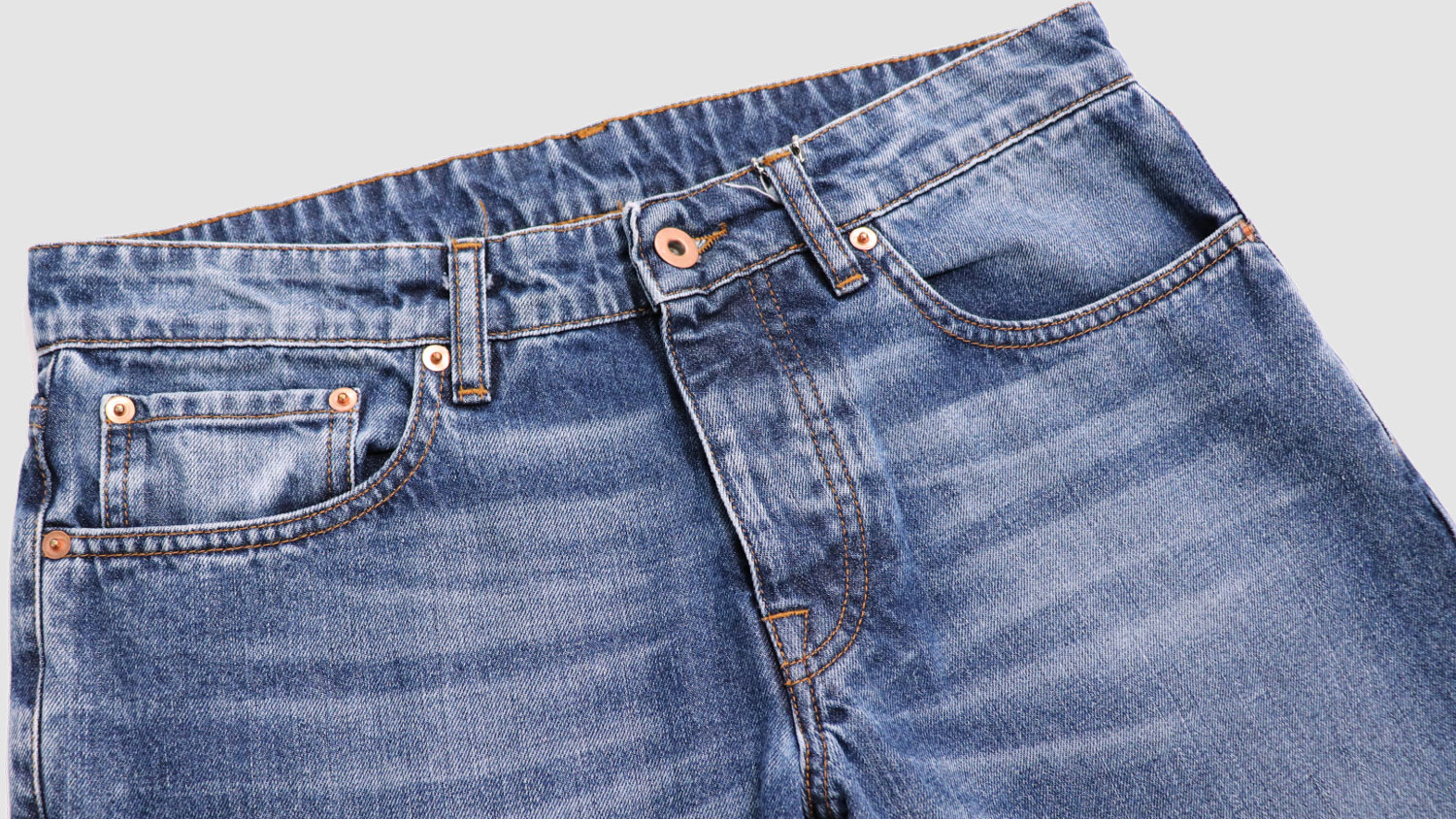YES. I make jeans more environmentally friendly.
Until a pair of jeans looks the way it does in stores they undergo a lot more different treatments than you’d expect. A raw denim pair of jeans with the denim fabric dyed indigo blue is tailored first. At this stage the jeans are still dark blue and the fabric is still very stiff. This stiffness comes from what’s referred to as sizing, which is applied to the yarn as a kind of protection during the weaving process. This protective element has to be chemically removed after the final garment is assembled. Before that happens, the jeans are given the most authentic seat creases possible—either by hand using simple sandpaper or using laser technology.
The path to creating the used look
Then the first treatment step is applied to the jeans, in which CHT products are used - this is referred to as desizing. In this process, the sizing layer is removed using enzymes to make the jeans softer and more pleasant to the touch. In this process, the detached indigo dye leads to a problem known as "backstaining": the dye detached from the outer layer of fabric settles on the lighter inner sides of the jeans and on the pocket lining. To prevent this unwanted effect, CHT has highly effective anti-backstaining agents in its range.
How is CHT involved?
After desizing, however, the jeans still don't look properly used. To achieve this effect, even more of the indigo dye on the surface of the denim needs to be removed from the jeans to partially reveal the white yarn underneath. To make this step as environmentally friendly as possible, CHT’s organIQ range is particularly ecological and includes an enzyme that uses nebulization technology to achieve a stonewashed look without the conventional treatment with pumice stones. During this step, the first "high-lows" appear at the higher points on the surface of the garment, such as the seams and pockets. This effect is intensified with a subsequent bleaching step. Depending on the desired look, the bleach is sprayed locally on the used areas such as the front and back of the thighs to achieve extra lightening. To additionally lighten the overall tone of the jeans and also achieve more contrast on the surface, the entire pair of jeans is usually treated with bleach once again. In the case of our CHT bleach range, that’s also possible using nebulizing technology that saves both water and energy. Once the jeans look used enough, they’re then treated with a softener for a better feel in the store. In addition to the normal jeans washes, we also offer chemicals for special effects such as shine, permanent wrinkles, a leather look and many more. There are virtually no limits to creativity in the field of finished goods treatment—and that’s precisely what makes the work in the Application Field Jeans & Garment so varied and exciting.




